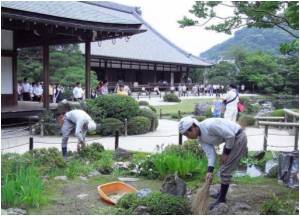Imagine if we could have trees with naturally glowing leaves that could replace street lamps and contribute to the health of the environment.

The new nanoparticles could replace the electricity powered street light with biologically powered light that removes CO2 from the atmosphere 24 hours a days.
"In the future, bio-LED could be used to make roadside trees luminescent at night. This will save energy and absorb CO2 as the bio-LED luminescence will cause the chloroplast to conduct photosynthesis," Discovery News quoted Yen-Hsun Su in an interview with Chemistry World, as saying.
The gold, sea urchin shaped nanoparticles are the key to turning a material that normal absorbs light into one that emits it.
Chlorophyll, the photosynthetic pigment that gives leaves their characteristic green color, is widely known for its ability to absorb certain wavelengths of light.
However, under certain circumstances, such as being exposed to violet light, chlorophyll can also produce a light of its own. When exposed to light with a wavelengths of about 400 nanometers the normally green colored chlorophyll glows red.
Advertisement
When shorter wavelengths of light, invisible to the human eye, hit the gold nanoparticles, they get excited and start to glow violet. That violet light strikes the nearby chlorophyll molecules, excites them, and the chlorophyll then produces the red light.
Advertisement
The study has been published in the journal Nanoscale.
Source-ANI









